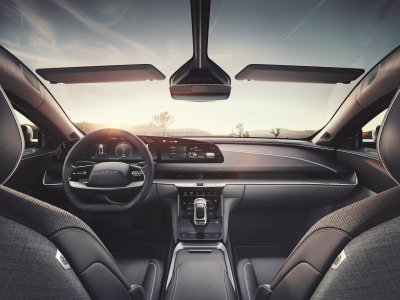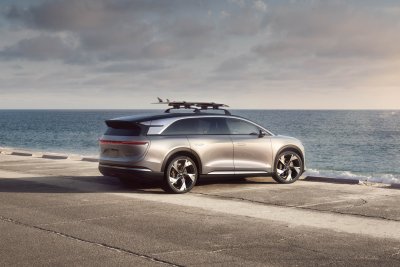Building cars isn’t just complex, it’s expensive. Lucid Motors, like Ford Motor Company, loses money with every car is produces. In the third quarter, Lucid lost $227,802 per model, far more than Ford’s $62,000.
The two-model startup, which only has the Air sedan in production, struggled out of the gate in 2021 when assembly started with quality control issues. Other startup automakers have had similar issues, including Fisker. Seasoned car companies often have stumbling blocks when they release a new vehicle.
“Building vehicles at scale and profitably is among the most challenging undertakings in modern manufacturing. That’s particularly true for startups like Lucid entering series production for the first time with its cutting-edge tech, but even new vehicle launches for legacy OEMs rarely go flawlessly,” Paul Waatti, manager of industry analysis at AutoPacific told Newsweek.
As Lucid embarked on the design of its first battery-electric sport utility vehicle (SUV), the Gravity, the company looked to not include elements from the Air’s design that have been production pain points for the electric vehicle (EV) maker.
Lucid Motors

Lucid Motors
“When I look back at Air, I think the interior. Even though the overall look of the interior is quite simple and minimalist, there are a lot of parts – material changes; there’s a lot of components. There’s a lot of changes between colors throughout the different colorways,” Derek Jenkins, senior vice president of design and brand at Lucid told Newsweek, while sitting in the Gravity’s front trunk.
“With Gravity, we’ve been able to harmonize a little bit more and have more synergy between the different colorways. So therefore, we’re having less complexity.”
He gave examples. The interior brightwork in the Air has not been carried over to the Gravity. Instead, there’s just little accent elements. This was done to allow Gravity to have a better price point and to increase the quality level of the model.
Also, it’ better for the environment, Jenkins said, explaining that it ticks four boxes: production, complexity, cost and sustainability. “Ultimately, that goes back to the consumer,” he said.
The Gravity is slated to start at around $80,000. The smaller Mercedes-Benz EQS SUV and Audi Q8 E-Tron start at $104,400 and $74,400, respectively.

Lucid Motors

Lucid Motors
“Lucid felt the crushing reality of the true cost of manufacturing vehicles with the Air sedan launch issues in 2021, but it now has those early lessons to build on for the Gravity launch. It’s always a tricky line for automakers to straddle design and complexity. Less is usually more in manufacturing, and form follows function,” Waatti said.
“Overly intricate designs and material transitions often require added component costs and complicated assembly procedures. Reducing styling and manufacturing complexities is cost-effective and usually outweighs the perceived benefit of a more detailed design. It generally means higher quality products out of the factory with fewer things to go wrong and a better consumer experience in the long run.”
Lucid manufactures all its vehicles at its plant in in Casa Grande, Arizona, halfway between Tucson and Phoenix. When it opened, it was the first greenfield electric vehicle factory in North America. It initially had a 10,000-vehicle-per-year capacity. Planned upgrades would allow the company to manufacture up to 300,000 models per year there.
The company announced plans last year to build a plant in Saudi Arabia. Lucid’s largest shareholders include Saudi Arabia’s Public Investment Fund, its affiliate Ayar Third Investment, Vanguard and BlackRock, among others, according to InvestorPlace, an independent financial research firm.
Uncommon Knowledge
Newsweek is committed to challenging conventional wisdom and finding connections in the search for common ground.
Newsweek is committed to challenging conventional wisdom and finding connections in the search for common ground.


